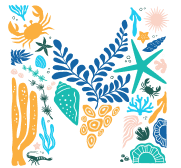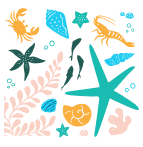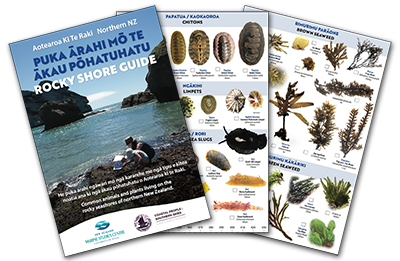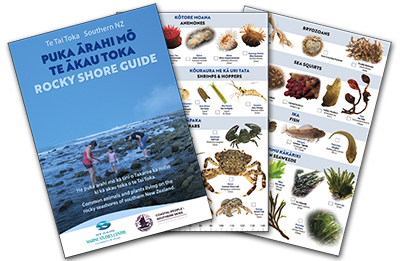WHAT YOU’LL NEED
– A 1m x 1m square quadrat (see instructions below on how to make one)
– A print out of this data sheet and a pen or mobile access to load your survey data online here
1. PLAN YOUR TRIP AT LOW TIDE
Tide times can be found by looking in the weather information section of a newspaper, or at metservice.com/marine/tides/index.
2. MAKE YOUR METRE SQUARE (QUADRAT)
Make a square frame by tying 4 x 1m lengths of bamboo canes together, or a 4m length of rope with three knots tied on it at 1m intervals that can be arranged into a square shape on the shore.
3. GO TO THE SEASHORE
Randomly choose a position to lay your square down near the sea.
Never turn your back on breaking waves at the water’s edge!
4. RECORD YOUR SURVEY SITE INFORMATION
- Record the shore level on the datasheet or online here using your phone or tablet.
- Take a photo of your metre square with the top of your datasheet in the corner so that you can compare the features of your sample area with others.
- Describe the location of the site, (e.g. name of the beach or a local landmark). This can also be done using a GPS function on your phone.
- Record the start time of your survey.
- Record key features of the site, (e.g. presence of a freshwater stream, evidence of human influences).
- Fill in as much information as possible before heading to the shore.
5. RECORD THE TYPE OF GROUND SURFACE (SUBSTRATE) IN YOUR SQUARE (E.G. REEF, BOULDER, ETC.) IN PERCENTAGES
This should add up to 100 %. If sand is layered on top of the reef – record the upper surface (in this case sand). Remember you can use your 10 cm² quadrat (1% of your m2) to help figure out the cover of the substrate. Find out how to do this here!
6. COUNT THE ANIMALS AND PLANTS IN YOUR SQUARE
- Measure the abundance of seaweeds using percentage cover. This is the percentage of the square that is covered by the seaweed when looking down. You can use your 10 cm² quadrat to help you.
- Start in one corner of your square and count the animals that you can see without moving any rocks or seaweed. Some small animals like barnacles can be found in very large numbers and it may not be possible to count all of these animals accurately inside your square. You can do a rough count in a small part of your square and scale this up using your 10cm² quadrat).
- Look for hidden animals on and under seaweeds, inside rocky crevices, and beneath small boulders. If you turn rocks over remember to return them gently to their original position. Do not lift rocks that are larger than your head.
- If you find a species you cannot identify, write a description of it in the species list. If you can, take a photo of it with a ruler (if possible) in the shot to indicate its size. Write a brief description of where it was found and what is was doing. Email this information to marinemetresquared@gmail.com to help others to identify it later.
7. CAPTURE A 3D MODEL OF YOUR SURVEY SITE
If you’d like to capture a 3D model of your site so you and others can revisit it later, you can do a quick photogrammetry survey using your phone. Once you’ve downloaded the app it only takes around 10 minutes. Find out how here.
8. SHARE YOUR FINDINGS
Load your findings into the Marine Metre² Database.





